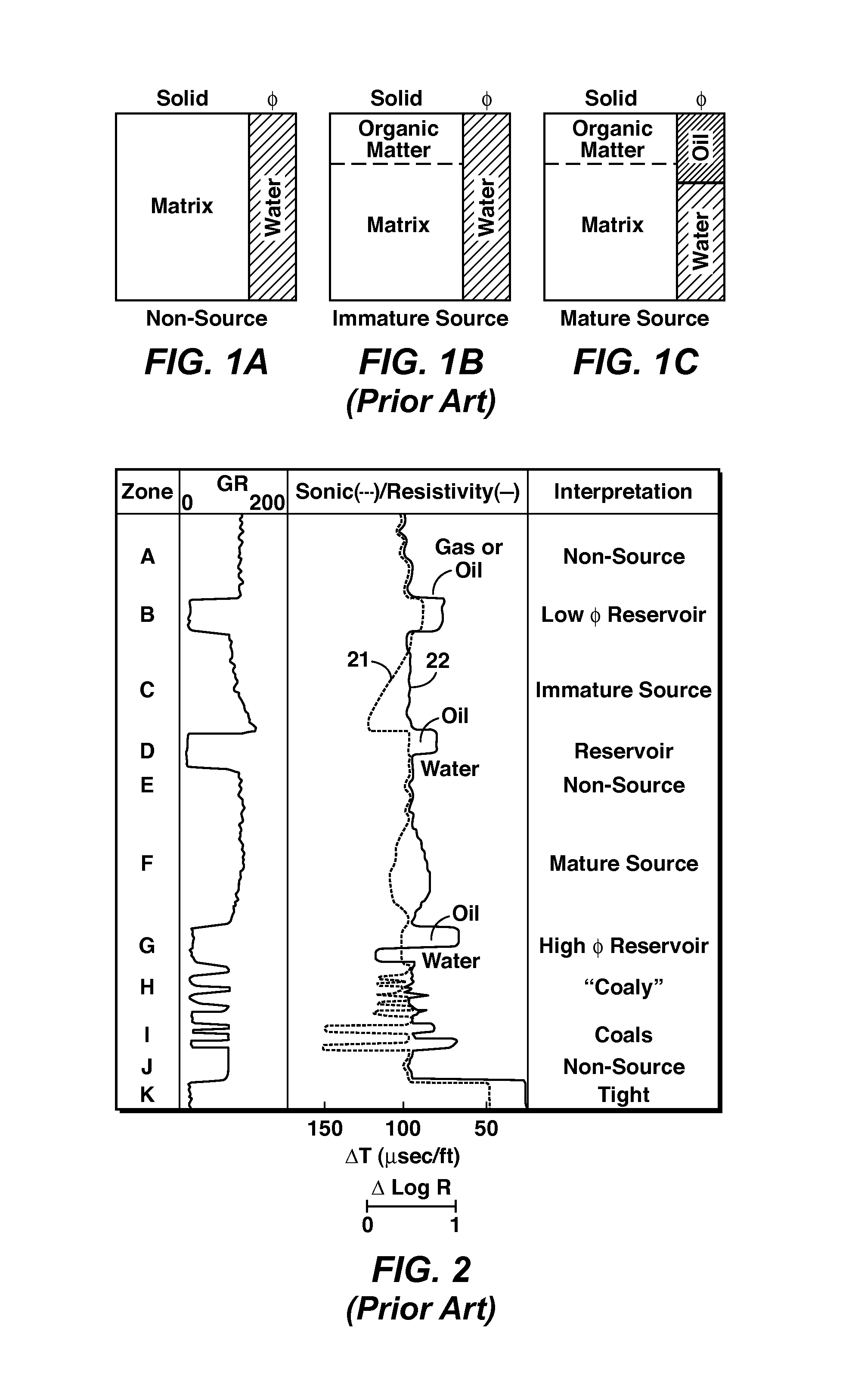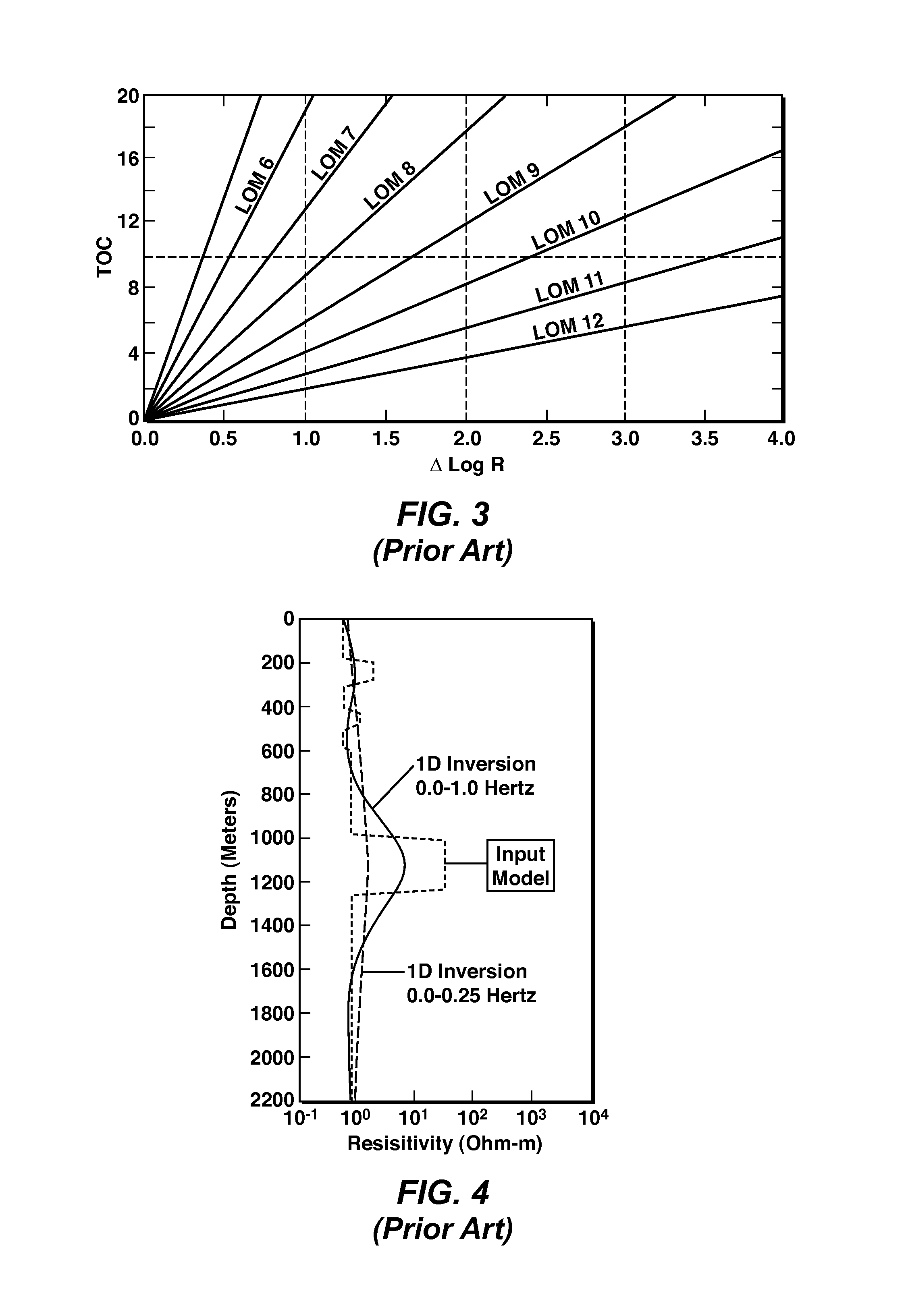Method For Remote Identification And Characterization of Hydrocarbon Source Rocks Using Seismic and Electromagnetic Geophysical Data
a geophysical data and seismic wave technology, applied in the field of hydrocarbon exploration, can solve the problems of large uncertainties, essentially unknown source adequacy, and inability to definitively identify the presence of adequate source rocks
- Summary
- Abstract
- Description
- Claims
- Application Information
AI Technical Summary
Problems solved by technology
Method used
Image
Examples
Embodiment Construction
[0025]The present invention extends the well known DeltaLogR well-based method for estimating hydrocarbon source rock TOC, so that it is performed using seismic and electromagnetic geophysical data acquired remotely from the subsurface hydrocarbon source rock. Formation interval velocities derived from the seismic data, and formation resistivity data derived from the electromagnetic data (preferably controlled-source electromagnetic (“CSEM”) survey data), are used instead of well log sonic and resistivity data from wells, respectively, to produce a new Remote DeltaLogR (or “RDeltaLogR”) response. This new response is interpreted in conjunction with the overall character of the seismic reflection data (including continuity, geometry, and reflection amplitude) in cross-section, map, and volume views to further distinguish source rock from hydrocarbon reservoir rocks that can also exhibit an RDeltaLogR response, and from fine-grained non-source rocks such as low TOC shales. The present...
PUM
 Login to View More
Login to View More Abstract
Description
Claims
Application Information
 Login to View More
Login to View More - R&D
- Intellectual Property
- Life Sciences
- Materials
- Tech Scout
- Unparalleled Data Quality
- Higher Quality Content
- 60% Fewer Hallucinations
Browse by: Latest US Patents, China's latest patents, Technical Efficacy Thesaurus, Application Domain, Technology Topic, Popular Technical Reports.
© 2025 PatSnap. All rights reserved.Legal|Privacy policy|Modern Slavery Act Transparency Statement|Sitemap|About US| Contact US: help@patsnap.com



